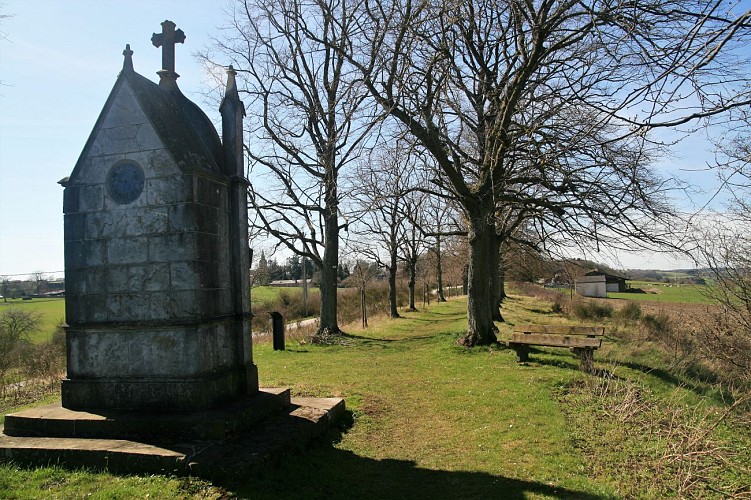Alert
Alerts
The Drêve des Tilleuls and the Neo-Gothic Chapel


Description
The Drève des Tilleuls and the Neo-Gothic Chapel This is the final stopping-place on your walk through the region of Wellin. The Drève, an avenue of linden trees, stands slightly outside the village on a hillside of clastic rock, and offers an impressive panorama. To the south, the land rises fairly smoothly, pastures fading in the distance into deep forests: this is the Ardennes. In the opposite direction, looking northward, the terrain is more varied. In the foreground, you can make out a depression, La Grande Fagne, carved out of soft rock easily eroded by a combination of frost and run-off, and by root action. This rock has the composition of clay but has been consolidated by a lengthy geological process into a hard rock known to geologists as schist. Beyond this depression, the land rises towards a wooded hill
running east to west, the Tienne de Reumont. Walking this hill, you will note a number of limestone outcrops indicating that we have now entered the Calestienne. After a stretch of schists, the limestone strip continues for over a kilometre (Bois de Haur). For an idea of the scale of the strip, we need to look west, towards the bell-tower of Lomprey church; just above the level of the motorway, you can make out the working face of the Limites quarry where the limestone is extracted. To the north of theCalestienne, the broad Famenne depression lies in the shales of the Upper Devonian, before the terrain rises sharply to the Condroz.
The Drève des Tilleuls leads to the Chapel of Our Lady of the Seven Sorrows, built in 1860 on the orders of
the Baroness Baré de Comogne. To reach the oratory, you must first negotiate the magnificent alley of trees
symbolising the seven sorrows of the Virgin. The chapel is neo-Gothic in style and built on asiltstone promontory. And since history is often interwoven with religion, in times of drought the faithful would come together in procession along the avenue to the chapel to pray for rain.
Technical Information
Altimetric profile
IGN cards






Data author






